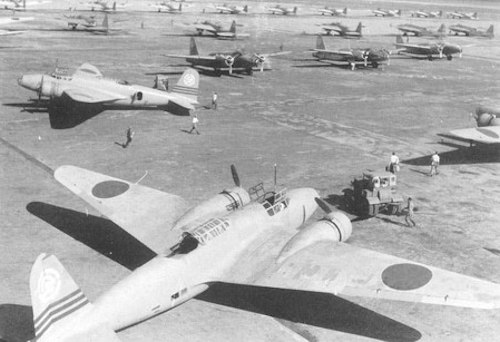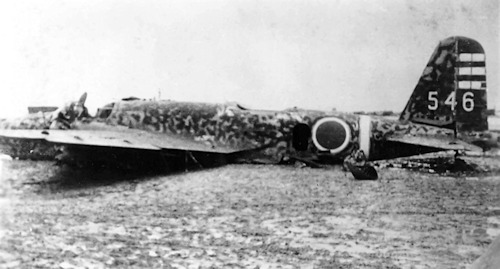The Mitsubishi Ki-21 - Type 97 heavy bomber - was one of the most important bombers of the Japanese Empire.
In the period in which it was built it was certainly an advanced vehicle, and according to the technicians of the time it was an aircraft "without any imperfections from an aeronautical point of view and capable of more than appreciable tests". The bomber (Sally for the allies), from 1938 to 1945, was used by the Air Force Service of the Imperial Japanese Army.
Overall, more than 2000 Mitsubishi Ki-21s were built.
The first prototype took off on December 18, 1936. Subsequently, the general structure of the aircraft did not undergo any particular changes, nor did the performances change significantly.
The bomber introduced itself as: “excellent from the point of view of maneuverability, with considerable autonomy and good armament”1. However, the aircraft had poor payload capabilities and exaggerated vulnerability.

The Mitsubishi Ki-21 entered the scene in the summer of 1938 and were employed - in fact - on every war theater where the Japanese Empire was engaged. It is important to underline that the new Japanese bomber supplemented and then replaced the Fiat BR.20 Stork (medium bomber).
It is good to remember that for years, during the Second Sino-Japanese War, the Ki-21s were among the harshest oppressors of the Chinese, as they continuously bombed cities and villages…
Chongqing and Shanghai were the cities - perhaps - by far the most "visited" by the aircraft of the Empire of the Rising Sun which caused thousands and thousands of deaths with their bombs.
The Sallys - in the period 1941-42 - were heavily employed to conduct operations in the Philippines, Malaysia, Hong Kong and Burma. In the latter reality, however, the Japanese bombers began to collide with the fearsome Curtiss P-40 Warhawk and Hawker Hurricane fighters and the consequences were devastating.
Around 1942 it became clear that the aircraft was fast becoming "outdated", so it was increasingly removed from front-line service.
 Towards the end of World War II, a number of Mitsubishi Ki-21s were used by the Giretsu Kuteitai (special forces paratroopers) to carry out attacks on US forces in Okinawa and the Ryukyu Islands.
Towards the end of World War II, a number of Mitsubishi Ki-21s were used by the Giretsu Kuteitai (special forces paratroopers) to carry out attacks on US forces in Okinawa and the Ryukyu Islands.
In my opinion, a noteworthy episode was the raid carried out against Yontan (May 24-25, 1945). Five Mitsubishi Ki-21 bombers were sent to attack the airport; four were shot down, but the fifth managed to land on the main runway at Yontan giving a dozen or so a chance giretsu to land…Special Forces men destroyed and damaged some thirty US aircraft and set fire to 70.000 gallons of fuel.
The Mitsubishi Ki-21 (IIB version) had a wingspan of 22,5 m, length 16 m and height 4,85 m. The empty weight was 6070 kg, while loaded 10600 kg.
Engine: 2 Mitsubishi Ha101, power 1500 HP (each). The maximum speed was 485 km/h, cruise 380 km/h and the service ceiling was 10.000 m.
Armament consisted of 89 mm Type 7,7 and 103 mm Ho-12,7 machine guns. The aircraft could carry up to 1000 kg of bombs.
He could count on a crew of 5/7 men.
1 See G. Bonacina, Il Sally (Mitsubishi Ki-21), in Storia illustrata n°133, 1968, p.46
Photo: US Navy / web












